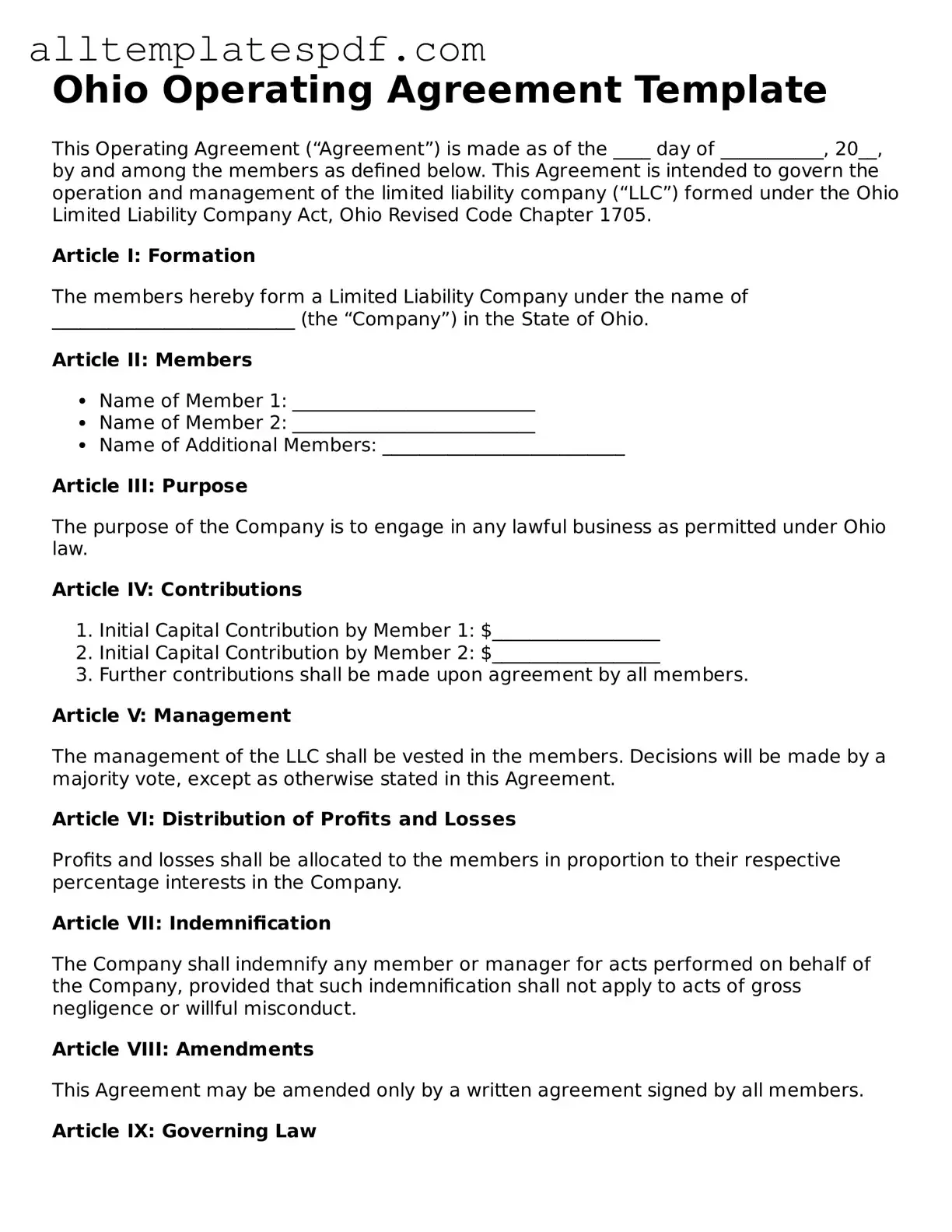Filling out the Ohio Operating Agreement form can be a straightforward process, but many people make common mistakes that can lead to complications later on. One frequent error is failing to include all members of the LLC. Every member's name and address should be clearly listed to ensure that everyone is recognized in the agreement.
Another mistake is neglecting to define the roles and responsibilities of each member. Without clear definitions, misunderstandings can arise, leading to disputes down the line. It’s crucial to specify who handles what within the organization.
Some individuals overlook the importance of outlining the decision-making process. The agreement should state how decisions are made—whether by majority vote, unanimous consent, or another method. This clarity can prevent conflicts and ensure smooth operations.
Additionally, many people forget to address profit and loss distribution. It’s essential to specify how profits and losses will be shared among members. Without this information, disagreements may occur when it comes time to distribute earnings.
Another common error is not including a procedure for adding new members or removing existing ones. Life circumstances change, and having a clear process in place can save time and prevent disputes in the future.
Some individuals fail to account for the dissolution of the LLC. It's important to outline the conditions under which the business may be dissolved and the process for doing so. This foresight can help avoid confusion later.
Many people also neglect to review the agreement for clarity and completeness. A well-drafted agreement should be easy to understand. Ambiguities can lead to different interpretations, which can create problems down the line.
Another mistake is not having the agreement signed by all members. An unsigned agreement may not hold up in court if disputes arise. All members should review and sign the document to ensure its validity.
Some individuals may not seek legal advice when drafting their Operating Agreement. Consulting a legal professional can provide valuable insights and help avoid pitfalls that could affect the business.
Finally, many people forget to keep the Operating Agreement updated. As circumstances change—like new members joining or roles shifting—it's essential to revise the agreement to reflect the current state of the LLC.
